David Baxter PhD
Late Founder
What awaits in Windows 8.1 ? a Preview tour
By Woody Leonhard, Windows Secrets
July 3, 2013
Last week, Microsoft released the beta bits for the next version of Windows ? the first .1 Windows update in decades.
Win8 fans will surely update to Version 8.1 when it?s released in the fall, but even old-school Windows users will find some surprisingly good enhancements.
That said, Windows 8.1 isn?t going to change many minds about Microsoft?s new direction for its OS. You won?t see Microsoft?s servers crashing as millions download the final release; you won?t see lines of new PC buyers waiting for Costco to open. To put it succinctly, in my (always-in-question) humble opinion, Windows 8.1 simply sucks less.
A warning: As has been widely reported, Microsoft made it difficult to upgrade from Windows 8.1 Preview to the final-release version. If you?re going to try the Preview (more info), do so on a spare system or in a virtual machine. (There?s more on this in the last section of this article.)
Microsoft?s priorities vs. users? priorities
The tile environment that is Metro ? as everyone outside Microsoft still calls it ? got the lion?s share of love in Windows 8.1. Tiles now come in more sizes and do more; there are additional colors and backgrounds for the Start screen ? some animated! ? and it?s easier to move and group tiles.
But that?s not what you really wanted to hear about first. Right?
Here are the Desktop changes that might actually make a difference to you, the Windows cognoscenti:
For those who link in the traditional desktop (which, I assume, is 99 percent of Win8 users), the improvements to Windows 8.1 are few and far between. But they are useful, particularly if you want to stay out of tinker-tile hell.
The sham Start button: Man, it bugs me when tech writers and Windows 8 fanboys claim that Win8.1′s new Start button is like what we?re used to in XP/Vista/Win7. It?s not even close. Microsoft put an icon on the far-left side of the taskbar (see Figure 1) that looks like the modern Windows logo. But when you click or tap it, you don?t get Win7′s start menu; as with Windows 8, you?re immediately flipped over to the Metro Start screen.
That?s the default action. Win8.1 also lets you use the Start button to open the new Apps view. (Find more on Apps view below, in ?Changes to the Metro side of Windows.?) And if you right-click or tap-and-hold the Start button, you get the Win-X power-user menu, shown in Figure 1. The new Win-X menu is nearly identical to the old one ? except for one important new option: Shut down. (Your Win-X menu might also have the Windows PowerShell in place of the Command Prompt. More on that below.)
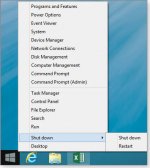
Figure 1. Win8.1's new Start button can launch the Win-X power-user menu, which now includes a shutdown option.
Right-click Shut down, and you can choose Shut down, Hibernate (on laptops), and Restart. For traditional Windows desktop users, this addition might be the most valuable Win8.1 enhancement of all.
Making Windows navigation more desktop-friendly: This is easily my favorite change: a properties box that helps old-school Windows users avoid Metro altogether. To open the dialog box, right-click any empty spot on the taskbar and choose Properties; then select the Navigation tab (see Figure 2).
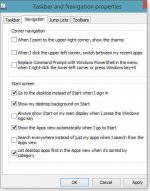
Figure 2. Win8.1's navigation properties let you bypass the Start screen.
I suggest you start by unchecking all the boxes at the top of the navigation properties box. That?ll keep you from accidentally triggering the Charms bar when your mouse goes too far into the upper-right corner of the screen. It?ll also keep you safe from the Recent apps drop-down when you stray into the upper-left corner. As for the third navigation option, I don?t know why anybody would forsake the Command Prompt for Windows PowerShell. There?s plenty of room on the Win-X menu; why make us choose? Crazy.
In the bottom half of the dialog box, check Go to the desktop instead of Start when I sign in. Check the second box to show the Desktop wallpaper (background) as the Metro Start screen background. (According to Microsoft, it makes the round trip from Metro to desktop and back less jarring.)
If you have dual monitors, you can also have Windows display the Start screen on the primary display when you hit the Windows key. Check the Show the Apps view automatically when I go to Start option if you want to bypass the Metro Start screen. I unchecked the next box: Search everywhere instead of just my apps when I search from the Apps view. When I use the search box in App view, I?m looking only for apps. Finally, I find it useful to have my desktop apps front and center in Metro land.
Changes to the Metro side of Windows
If and when you work with the Metro side, Windows 8.1 will make life a bit easier with the following changes:
The new All Apps view: To find an app in Win8′s Metro side, you have to wade through tiles on the Start screen, open the All Apps view (see Figure 3), or use the Search charm. If you have a lot of apps installed, it might take a while to find what you?re looking for.
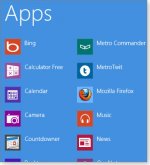
Figure 3. A partial view of Windows 8's list of installed apps. There's no easy way to organize the list.
Windows 8.1 lets you bring some order to the Apps view. Microsoft thinks this arrangement works better than Win7′s and earlier Start menus. I wouldn?t go that far, but it is an improvement. Two options stand out: you can sort by Most Frequently Used, or you can sort by category (see Figure 4). In the Win8.1 Preview, these categories are word-for-word duplicates of those found in the Win7 Start menu. For example, Microsoft Office 2013 is a category, as is Windows Accessories.
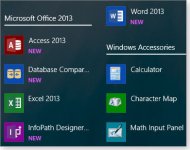
Figure 4. Win8.1's Apps list can be organized by category ? somewhat like Win7's Start menu.
Windows 8.1 also lets you set the new Apps view as the default screen, in place of the tiled interface.
A less cluttered Metro Start screen: In Windows 8, every time you install a new application, it seems every component of the app gets its own tile on the Start screen. So, for example, if you install Office 2013, you get 16 or more new tiles: Word, Excel, Outlook, and PowerPoint ? as you?d expect ? but also tiles for InfoPath Filler 2013, Telemetry Dashboard for Office 2013, Spreadsheet Compare 2013, and all sorts of other pieces of Office. After you install a new program in Win8, you might spend lots of time deleting the unwanted tiles from the Start screen.
With Windows 8.1, when you install a new program, its various tiles all go into the new Apps view. As you can see in Figure 4, newly installed software is labeled ?NEW.? It?s then up to you to go through the apps list and move just the tiles you want to the Metro Start screen. Moving tiles is easy: simply right-click or tap a tile and choose Pin to Start (and/or Pin to Taskbar for the apps you?ll use on the desktop).
Put more Metro apps on a single screen. In Windows 8.1, Metro still doesn?t accommodate overlapping windows (a capability that became commonplace in, what, the 1980s?). But at least it can now snap two or more slices of Metro windows side by side. You can also grab the divider to expand or contract the width of the slices ? at least a little bit. (The entire traditional desktop counts as one slice.)
Screen resolution determines the maximum number of slices. Windows reserves a minimum of 500 pixels for each slice, so, for example, a 1600-by-900 screen (see Figure 5) can accommodate up to three Metro slices.
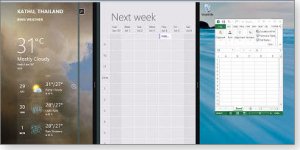
Figure 5. Metro snap can now handle more slices.
There are some additional improvements to the Metro side ? more Control Panel entries in the PC Settings dialog box, for example. But for old-school Windows users, they?re either minor or irrelevant.
Other improvements ? or at least, changes
Microsoft announced a bunch of additional changes that it plans to have in place when the production version of Windows 8.1 ships. Foremost among them are new versions of the Microsoft Metro apps. (The Windows 8 versions are as sorry a set of apps as I?ve ever seen.) Microsoft promises that the new Xbox Music app will, for example, actually play music instead of trying to sell you something. Imagine that.
Internet Explorer 11 will be included in Win8.1; a Windows 7 version will reportedly follow. Two interesting improvements to the browser are Mozilla?s WebGL graphics-rendering technology and the SPDY load-time speedup protocol pioneered by Google (Wikipedia info).
There will reportedly be a new Windows Store that isn?t quite so dumb as the old one. But it?ll undoubtedly still be loaded with the same lousy apps. Facebook and Flipboard have finally ? finally! ? agreed to make Windows 8 apps. It remains to be seen whether any of the other big-name websites or app companies will join them.
How to install the Windows 8.1 Preview bits
Installing Windows 8.1 Preview is pretty easy. But before you take the plunge, here are a few words of caution.
Microsoft advises that Win8.1 Preview is a one-way trip. If you install Preview on a machine, you?ll have to remove it before installing the final version. In other words, don?t put Preview on a production system ? or any other PC on which you?re not comfortable reinstalling Windows from scratch.
As with all beta products, Win8.1 Preview has some significant bugs. For example, clicking buttons inside Microsoft Metro apps dumped me back to the Start screen. Also, setting up multiple Metro-snap slices caused no end of video conflicts. Finally, Preview ran so slow, I had time to brew and consume a tank of coffee.
If all that doesn?t put you off, you can choose from two methods for installing Windows 8.1 Preview.
Bottom line: If you don?t like Windows 8, you most likely won?t like Windows 8.1. On the other hand, if you?re a Windows 8 fan (or you?re stuck with Windows 8 for whatever reason), there?s no debate ? you should install Windows 8.1 when it?s ready. As for installing the Preview edition ? try it only if you have nothing better to do.
Oh, and watch out for the so-called Win8.1 Preview ?reviews.? One mainstream computer news outlet published this: ?If you?ve been screaming from the rooftops for Microsoft to return the Start button to Windows, you?re going to be happy. ? The update brings a long list of new features, but most notably, the Start button returns!? It?s enough to make me cry.
Insider tips, how-tos, best security practices, and more ? Subscribe to Windows Secrets ? free! The Windows Secrets Newsletter brings you essential tricks for running Windows XP, Vista, 7, Internet Explorer, Firefox, Windows Update, and more ? weekly, free.
By Woody Leonhard, Windows Secrets
July 3, 2013
Last week, Microsoft released the beta bits for the next version of Windows ? the first .1 Windows update in decades.
Win8 fans will surely update to Version 8.1 when it?s released in the fall, but even old-school Windows users will find some surprisingly good enhancements.
That said, Windows 8.1 isn?t going to change many minds about Microsoft?s new direction for its OS. You won?t see Microsoft?s servers crashing as millions download the final release; you won?t see lines of new PC buyers waiting for Costco to open. To put it succinctly, in my (always-in-question) humble opinion, Windows 8.1 simply sucks less.
A warning: As has been widely reported, Microsoft made it difficult to upgrade from Windows 8.1 Preview to the final-release version. If you?re going to try the Preview (more info), do so on a spare system or in a virtual machine. (There?s more on this in the last section of this article.)
Microsoft?s priorities vs. users? priorities
The tile environment that is Metro ? as everyone outside Microsoft still calls it ? got the lion?s share of love in Windows 8.1. Tiles now come in more sizes and do more; there are additional colors and backgrounds for the Start screen ? some animated! ? and it?s easier to move and group tiles.
But that?s not what you really wanted to hear about first. Right?
Here are the Desktop changes that might actually make a difference to you, the Windows cognoscenti:
For those who link in the traditional desktop (which, I assume, is 99 percent of Win8 users), the improvements to Windows 8.1 are few and far between. But they are useful, particularly if you want to stay out of tinker-tile hell.
The sham Start button: Man, it bugs me when tech writers and Windows 8 fanboys claim that Win8.1′s new Start button is like what we?re used to in XP/Vista/Win7. It?s not even close. Microsoft put an icon on the far-left side of the taskbar (see Figure 1) that looks like the modern Windows logo. But when you click or tap it, you don?t get Win7′s start menu; as with Windows 8, you?re immediately flipped over to the Metro Start screen.
That?s the default action. Win8.1 also lets you use the Start button to open the new Apps view. (Find more on Apps view below, in ?Changes to the Metro side of Windows.?) And if you right-click or tap-and-hold the Start button, you get the Win-X power-user menu, shown in Figure 1. The new Win-X menu is nearly identical to the old one ? except for one important new option: Shut down. (Your Win-X menu might also have the Windows PowerShell in place of the Command Prompt. More on that below.)

Figure 1. Win8.1's new Start button can launch the Win-X power-user menu, which now includes a shutdown option.
Right-click Shut down, and you can choose Shut down, Hibernate (on laptops), and Restart. For traditional Windows desktop users, this addition might be the most valuable Win8.1 enhancement of all.
Making Windows navigation more desktop-friendly: This is easily my favorite change: a properties box that helps old-school Windows users avoid Metro altogether. To open the dialog box, right-click any empty spot on the taskbar and choose Properties; then select the Navigation tab (see Figure 2).

Figure 2. Win8.1's navigation properties let you bypass the Start screen.
I suggest you start by unchecking all the boxes at the top of the navigation properties box. That?ll keep you from accidentally triggering the Charms bar when your mouse goes too far into the upper-right corner of the screen. It?ll also keep you safe from the Recent apps drop-down when you stray into the upper-left corner. As for the third navigation option, I don?t know why anybody would forsake the Command Prompt for Windows PowerShell. There?s plenty of room on the Win-X menu; why make us choose? Crazy.
In the bottom half of the dialog box, check Go to the desktop instead of Start when I sign in. Check the second box to show the Desktop wallpaper (background) as the Metro Start screen background. (According to Microsoft, it makes the round trip from Metro to desktop and back less jarring.)
If you have dual monitors, you can also have Windows display the Start screen on the primary display when you hit the Windows key. Check the Show the Apps view automatically when I go to Start option if you want to bypass the Metro Start screen. I unchecked the next box: Search everywhere instead of just my apps when I search from the Apps view. When I use the search box in App view, I?m looking only for apps. Finally, I find it useful to have my desktop apps front and center in Metro land.
Changes to the Metro side of Windows
If and when you work with the Metro side, Windows 8.1 will make life a bit easier with the following changes:
The new All Apps view: To find an app in Win8′s Metro side, you have to wade through tiles on the Start screen, open the All Apps view (see Figure 3), or use the Search charm. If you have a lot of apps installed, it might take a while to find what you?re looking for.

Figure 3. A partial view of Windows 8's list of installed apps. There's no easy way to organize the list.
Windows 8.1 lets you bring some order to the Apps view. Microsoft thinks this arrangement works better than Win7′s and earlier Start menus. I wouldn?t go that far, but it is an improvement. Two options stand out: you can sort by Most Frequently Used, or you can sort by category (see Figure 4). In the Win8.1 Preview, these categories are word-for-word duplicates of those found in the Win7 Start menu. For example, Microsoft Office 2013 is a category, as is Windows Accessories.

Figure 4. Win8.1's Apps list can be organized by category ? somewhat like Win7's Start menu.
Windows 8.1 also lets you set the new Apps view as the default screen, in place of the tiled interface.
A less cluttered Metro Start screen: In Windows 8, every time you install a new application, it seems every component of the app gets its own tile on the Start screen. So, for example, if you install Office 2013, you get 16 or more new tiles: Word, Excel, Outlook, and PowerPoint ? as you?d expect ? but also tiles for InfoPath Filler 2013, Telemetry Dashboard for Office 2013, Spreadsheet Compare 2013, and all sorts of other pieces of Office. After you install a new program in Win8, you might spend lots of time deleting the unwanted tiles from the Start screen.
With Windows 8.1, when you install a new program, its various tiles all go into the new Apps view. As you can see in Figure 4, newly installed software is labeled ?NEW.? It?s then up to you to go through the apps list and move just the tiles you want to the Metro Start screen. Moving tiles is easy: simply right-click or tap a tile and choose Pin to Start (and/or Pin to Taskbar for the apps you?ll use on the desktop).
Put more Metro apps on a single screen. In Windows 8.1, Metro still doesn?t accommodate overlapping windows (a capability that became commonplace in, what, the 1980s?). But at least it can now snap two or more slices of Metro windows side by side. You can also grab the divider to expand or contract the width of the slices ? at least a little bit. (The entire traditional desktop counts as one slice.)
Screen resolution determines the maximum number of slices. Windows reserves a minimum of 500 pixels for each slice, so, for example, a 1600-by-900 screen (see Figure 5) can accommodate up to three Metro slices.

Figure 5. Metro snap can now handle more slices.
There are some additional improvements to the Metro side ? more Control Panel entries in the PC Settings dialog box, for example. But for old-school Windows users, they?re either minor or irrelevant.
Other improvements ? or at least, changes
Microsoft announced a bunch of additional changes that it plans to have in place when the production version of Windows 8.1 ships. Foremost among them are new versions of the Microsoft Metro apps. (The Windows 8 versions are as sorry a set of apps as I?ve ever seen.) Microsoft promises that the new Xbox Music app will, for example, actually play music instead of trying to sell you something. Imagine that.
Internet Explorer 11 will be included in Win8.1; a Windows 7 version will reportedly follow. Two interesting improvements to the browser are Mozilla?s WebGL graphics-rendering technology and the SPDY load-time speedup protocol pioneered by Google (Wikipedia info).
There will reportedly be a new Windows Store that isn?t quite so dumb as the old one. But it?ll undoubtedly still be loaded with the same lousy apps. Facebook and Flipboard have finally ? finally! ? agreed to make Windows 8 apps. It remains to be seen whether any of the other big-name websites or app companies will join them.
How to install the Windows 8.1 Preview bits
Installing Windows 8.1 Preview is pretty easy. But before you take the plunge, here are a few words of caution.
Microsoft advises that Win8.1 Preview is a one-way trip. If you install Preview on a machine, you?ll have to remove it before installing the final version. In other words, don?t put Preview on a production system ? or any other PC on which you?re not comfortable reinstalling Windows from scratch.
As with all beta products, Win8.1 Preview has some significant bugs. For example, clicking buttons inside Microsoft Metro apps dumped me back to the Start screen. Also, setting up multiple Metro-snap slices caused no end of video conflicts. Finally, Preview ran so slow, I had time to brew and consume a tank of coffee.
If all that doesn?t put you off, you can choose from two methods for installing Windows 8.1 Preview.
- Download an ISO file directly from Microsoft. Pulling an ISO from the Windows 8.1 Preview site is best for running the new OS on a virtual machine, on a PC running XP/Vista/Win7 (or with no operating system at all), or if you want to set up a dual boot. Setting up Windows 8.1 Preview from an ISO file is the same as with Windows 8. Lincoln Spector details how to set up virtual machines and dual-boot configurations in his two-part Best Practices series: April 3, ?Two ways to put Windows 7 and 8 on the same PC? and April 11, ?Setting up a Win7/Win8 dual-boot system.?
- Download from the Windows Store. On a system that?s already running Windows 8, fire up your browser and head over to the Microsoft Windows 8.1 Preview Download site. Click the Get the Update box; after a few steps, you?ll be advised that the Preview is now available at the Windows Store on your machine. Install the program just as you would any other Windows Store program.
Bottom line: If you don?t like Windows 8, you most likely won?t like Windows 8.1. On the other hand, if you?re a Windows 8 fan (or you?re stuck with Windows 8 for whatever reason), there?s no debate ? you should install Windows 8.1 when it?s ready. As for installing the Preview edition ? try it only if you have nothing better to do.
Oh, and watch out for the so-called Win8.1 Preview ?reviews.? One mainstream computer news outlet published this: ?If you?ve been screaming from the rooftops for Microsoft to return the Start button to Windows, you?re going to be happy. ? The update brings a long list of new features, but most notably, the Start button returns!? It?s enough to make me cry.
Insider tips, how-tos, best security practices, and more ? Subscribe to Windows Secrets ? free! The Windows Secrets Newsletter brings you essential tricks for running Windows XP, Vista, 7, Internet Explorer, Firefox, Windows Update, and more ? weekly, free.
